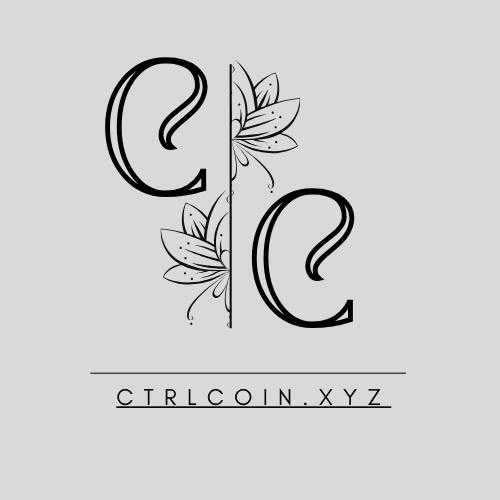Navigating the world of loans can be complex, but having a thorough understanding of the different types available can greatly enhance your ability to make well-informed financial decisions. Loans come in various forms, each designed to meet specific needs, whether it’s for personal use, purchasing a home or vehicle, financing education, or supporting a business. This comprehensive guide delves into the various loan types, their characteristics, and their ideal use cases to help you find the best fit for your financial situation.
Table of Contents
Toggle1. Personal Loans
1.1 Unsecured Personal Loans
- Definition: Unsecured personal loans are not backed by collateral. Instead, they are granted based on your creditworthiness, income, and financial history.
- Use Cases: These loans are versatile and can be used for a variety of purposes, including debt consolidation, large purchases, emergency expenses, or personal projects.
- Features: Because they are not secured by assets, unsecured personal loans typically come with higher interest rates compared to secured loans. Loan terms generally range from 1 to 7 years. Lenders assess your credit score, income, and existing debt to determine your eligibility and interest rate.
1.2 Secured Personal Loans
- Definition: Secured personal loans require you to provide collateral, such as a vehicle, savings account, or property, which the lender can seize if you default on the loan.
- Use Cases: These loans are suitable for individuals with lower credit scores or those who need to borrow a larger amount. They can be used for substantial expenses or debt consolidation.
- Features: Secured loans often come with lower interest rates due to the reduced risk for lenders. The loan term can vary, and the value of the collateral impacts the loan amount and terms.
2. Mortgage Loans
2.1 Fixed-Rate Mortgages
- Definition: Fixed-rate mortgages have an interest rate that remains the same throughout the life of the loan, providing consistent monthly payments.
- Use Cases: Ideal for individuals purchasing a new home or refinancing an existing mortgage. The stability in payment amounts helps with long-term budgeting.
- Features: Common terms include 15, 20, or 30 years. While the interest rate is fixed, the total cost of the mortgage can vary based on the term length and the loan amount.
2.2 Adjustable-Rate Mortgages (ARMs)
- Definition: ARMs feature an interest rate that adjusts periodically based on market conditions, which can result in fluctuating monthly payments.
- Use Cases: Suitable for borrowers who plan to move or refinance before the rate adjusts or those seeking lower initial rates. ARMs can be advantageous if market rates decrease.
- Features: ARMs often start with lower interest rates compared to fixed-rate mortgages but may increase after an initial period. Typical ARMs have a fixed-rate period of 5, 7, or 10 years before adjusting.
2.3 FHA Loans
- Definition: Federal Housing Administration (FHA) loans are government-backed mortgages designed to assist low-to-moderate-income borrowers in purchasing homes.
- Use Cases: Perfect for first-time homebuyers or those with less-than-perfect credit. FHA loans facilitate homeownership with less stringent requirements.
- Features: FHA loans offer lower down payment requirements and more flexible credit standards. They also require mortgage insurance premiums, which can impact overall loan costs.
2.4 VA Loans
- Definition: Loans guaranteed by the U.S. Department of Veterans Affairs (VA), available to eligible veterans, active-duty service members, and certain family members.
- Use Cases: Ideal for those who have served in the military and are purchasing a home. VA loans offer unique benefits that support homeownership.
- Features: VA loans often require no down payment and offer competitive interest rates. They do not require private mortgage insurance (PMI), which can reduce monthly payments.
2.5 USDA Loans
- Definition: Loans backed by the U.S. Department of Agriculture (USDA) designed to help low-to-moderate-income individuals purchase homes in eligible rural and suburban areas.
- Use Cases: Best for individuals or families looking to buy a home in a designated rural area.
- Features: USDA loans often require no down payment and have low mortgage insurance costs. They offer competitive interest rates and can be a good option for those who qualify.
3. Auto Loans
3.1 New Car Loans
- Definition: Loans specifically designed for purchasing new vehicles.
- Use Cases: Ideal for individuals looking to buy a brand-new car with the latest features and technologies.
- Features: New car loans typically have lower interest rates and longer terms compared to used car loans. They can include promotional rates or incentives from car manufacturers.
3.2 Used Car Loans
- Definition: Loans for purchasing pre-owned vehicles.
- Use Cases: Suitable for those looking to buy a used car at a potentially lower price than a new vehicle.
- Features: Interest rates may be higher than for new car loans due to the increased risk associated with used vehicles. Terms can vary, and lenders may consider the age and condition of the vehicle.
4. Student Loans
4.1 Federal Student Loans
- Definition: Loans funded by the federal government to help students finance their education.
- Use Cases: Ideal for undergraduate and graduate students who need financial assistance for tuition, books, and other educational expenses.
- Features: Federal student loans offer fixed interest rates, various repayment plans, and potential loan forgiveness options. Types include Direct Subsidized Loans, Direct Unsubsidized Loans, and Direct PLUS Loans.
4.2 Private Student Loans
- Definition: Loans provided by private lenders such as banks, credit unions, or online lenders to help cover education costs.
- Use Cases: Suitable for students who need additional funding beyond federal student loans or who do not qualify for federal assistance.
- Features: Private student loans may have variable or fixed interest rates and often require a credit check. Repayment terms and options can vary widely based on the lender and the borrower’s creditworthiness.
5. Business Loans
5.1 Small Business Administration (SBA) Loans
- Definition: Loans backed by the SBA, designed to help small businesses access capital for growth and operations.
- Use Cases: Ideal for small business owners seeking funding for expansion, equipment, or working capital.
- Features: SBA loans offer competitive interest rates, longer terms, and lower down payment requirements. Key types include SBA 7(a) Loans, SBA 504 Loans, and SBA Microloans, each with specific eligibility criteria and uses.
5.2 Traditional Business Loans
- Definition: Loans provided by banks or credit unions for various business needs.
- Use Cases: Suitable for established businesses requiring capital for operations, expansion, or equipment purchases.
- Features: Traditional business loans often require strong business credit, collateral, and a detailed business plan. Terms and interest rates can vary based on the lender and the borrower’s financial profile.
5.3 Invoice Financing
- Definition: Short-term loans based on outstanding invoices, where the lender advances a portion of the invoice amount.
- Use Cases: Ideal for businesses with delayed payment cycles who need immediate cash flow.
- Features: Invoice financing can be used to bridge gaps in cash flow. Lenders advance a percentage of the invoice amount, with repayment due when the invoice is paid by the customer.
6. Home Equity Loans and Lines of Credit
6.1 Home Equity Loan
- Definition: A lump-sum loan based on the equity you have in your home, which is the difference between your home’s market value and your mortgage balance.
- Use Cases: Suitable for large expenses such as home renovations, debt consolidation, or major purchases.
- Features: Home equity loans typically have fixed interest rates and predictable monthly payments. The loan term is usually between 5 to 15 years.
6.2 Home Equity Line of Credit (HELOC)
- Definition: A revolving credit line based on home equity, allowing you to borrow up to a certain limit as needed.
- Use Cases: Ideal for ongoing expenses or projects where flexibility is required.
- Features: HELOCs have variable interest rates and a draw period (usually 5 to 10 years) during which you can borrow funds. After the draw period, you enter a repayment period where both principal and interest are paid.
Conclusion
Understanding the different types of loans and their respective features is crucial for making informed financial decisions. Whether you’re looking to consolidate debt, purchase a home or car, finance your education, or support a business venture, each loan type offers unique benefits and terms. Carefully evaluate your financial needs, consider your eligibility, and choose the loan that best aligns with your goals and circumstances. By doing so, you can manage your borrowing effectively and make the most of the financial opportunities available to you.

